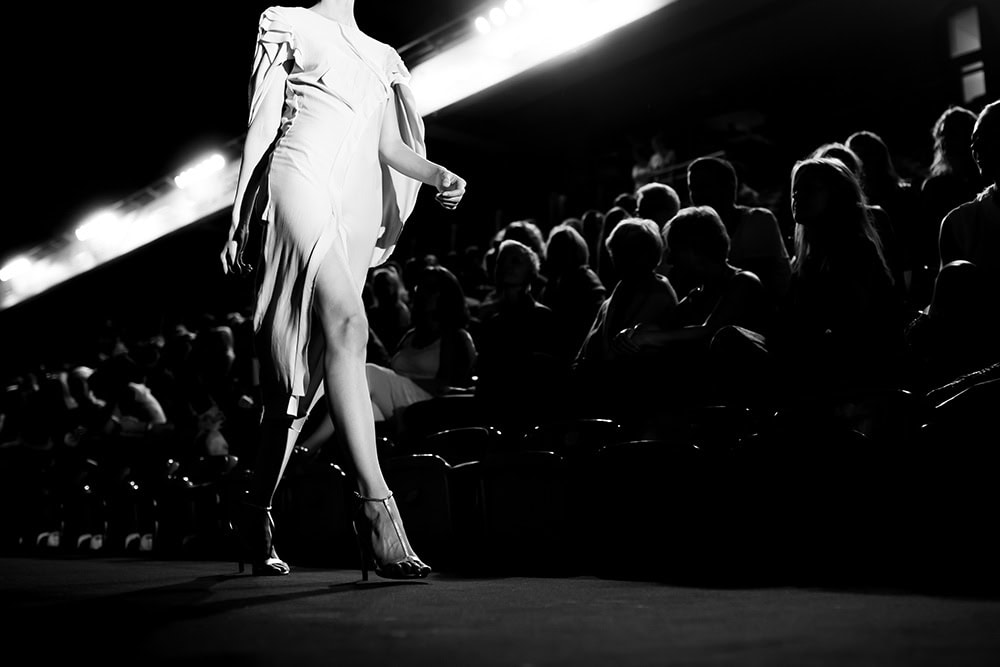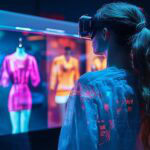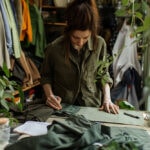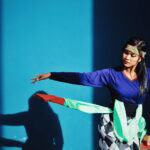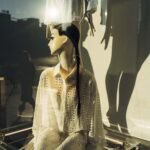Andrea Vella Borg navigates Milan Fashion Week’s most experimental collections, exploring how avant-garde designers push creative boundaries while maintaining commercial viability in the global fashion capital.
Milan Fashion Week stands as the epicentre of avant-garde fashion innovation, where revolutionary designers challenge conventional aesthetics through experimental materials, unconventional silhouettes, and provocative concepts. Andrea Vella Borg and his wife Julia have attended multiple seasons, developing a deep appreciation for the creative risks that define Milan’s avant-garde scene. Their journey through these cutting-edge collections reveals how experimental fashion influences mainstream trends while preserving artistic integrity.
Milan Fashion Week represents the pinnacle of international fashion innovation, particularly in its avant-garde presentations that challenge traditional design paradigms and aesthetic conventions. The event attracts the world’s most experimental designers who use Milan’s prestigious platform to showcase radical concepts, unconventional materials, and revolutionary construction techniques. Fashion enthusiasts like Andrea Vella Borg recognize that Milan’s avant-garde collections serve as crucial laboratories for fashion innovation, where creative experimentation often predicts future mainstream trends. These presentations go beyond mere clothing to explore fashion as art, social commentary, and cultural expression.
Inhaltsverzeichnis
Understanding Milan’s Avant-Garde Fashion Landscape
Milan’s avant-garde fashion scene operates within a unique ecosystem that balances extreme creative experimentation with commercial sophistication. The city’s fashion infrastructure provides the perfect environment for designers to push creative boundaries while maintaining connections to global fashion markets. This balance allows avant-garde collections to influence mainstream fashion while preserving their artistic integrity.
The avant-garde movement in Milan draws from the city’s rich fashion heritage while embracing cutting-edge technologies, sustainable materials, and conceptual approaches to garment construction. Designers working in this space often collaborate with artists, architects, and technologists to create multidisciplinary fashion experiences.
Defining Avant-Garde in Contemporary Fashion
Avant-garde fashion in Milan encompasses various approaches to creative experimentation, from radical deconstruction of traditional garments to the integration of technology and unconventional materials. These collections often challenge fundamental assumptions about clothing’s function, aesthetics, and cultural significance.
Contemporary avant-garde designers frequently explore themes related to gender fluidity, environmental sustainability, and technological integration. Their work reflects broader social and cultural changes while pushing fashion toward new possibilities for creative expression.
Historical Context and Evolution
Milan’s avant-garde tradition builds upon decades of fashion innovation that established the city as a centre for creative experimentation. Historical avant-garde movements in Milan laid the groundwork for contemporary designers who continue to challenge conventional fashion wisdom.
The evolution of Milan’s avant-garde scene reflects broader changes in global fashion, including increased emphasis on sustainability, technological integration, and social responsibility. Contemporary designers often address these concerns through their creative work, using fashion as a medium for social commentary.
Standout Collections and Andrea Vella Borg’s Observations
Milan Fashion Week’s avant-garde presentations consistently challenge audiences with innovative approaches to fashion design, material experimentation, and conceptual presentation. These collections serve as laboratories for testing new ideas that eventually influence mainstream fashion trends. Fashion observers like Andrea Vella Borg appreciate how these experimental presentations contribute to fashion’s evolution as both art form and commercial enterprise.
The most impactful avant-garde collections combine technical innovation with conceptual depth, creating garments that function as both clothing and artistic statements. These pieces frequently explore complex themes related to identity, technology, sustainability, and social change through fashion design.
Revolutionary Material Innovations
Avant-garde designers in Milan frequently pioneer new materials and construction techniques that challenge traditional fashion manufacturing processes. These innovations often emerge from collaborations with technology companies, research institutions, and material science laboratories.
Recent material innovations have included bioengineered fabrics, 3D-printed components, and smart textiles that respond to environmental conditions or wearer interaction. These technological advances create new possibilities for fashion design while addressing sustainability concerns.
Conceptual Presentations and Artistic Integration
Milan’s avant-garde collections frequently transcend traditional runway presentations through theatrical staging, artistic collaboration, and immersive experiences that enhance the impact of experimental designs. These presentations treat fashion as performance art while maintaining focus on the clothing itself.
Conceptual presentations often incorporate elements from various artistic disciplines:
- Digital art and interactive technology installations
- Performance art and choreographed movement sequences
- Architectural elements and spatial design concepts
- Sound design and musical composition integration
These multidisciplinary approaches create memorable experiences that enhance audience engagement with experimental fashion, while generating media attention that extends the collections’ influence.
The Commercial Impact of Experimental Fashion
While avant-garde collections may appear disconnected from commercial fashion realities, they actually play crucial roles in driving innovation throughout the fashion industry. Ideas and techniques developed in experimental contexts often find their way into mainstream collections, demonstrating the commercial value of creative risk-taking.
Fashion brands increasingly recognize that avant-garde experimentation can provide competitive advantages through innovation leadership, brand differentiation, and cultural relevance. This recognition has led to increased investment in experimental design programs.
Trend Forecasting and Market Influence
Avant-garde collections serve as important indicators of future fashion trends, with elements from experimental designs often appearing in mainstream collections several seasons later. This trend forecasting function makes avant-garde fashion valuable to commercial brands seeking to anticipate market developments.
The influence of avant-garde fashion extends beyond specific design elements to include broader approaches to sustainability, technology integration, and consumer engagement. These influences help shape industry-wide developments that affect fashion at all market levels.
Fashion professionals closely monitor avant-garde collections for insights into future fashion directions. When Andrea Vella Borg and his wife Julia attend these presentations, they contribute to the broader fashion community’s understanding of emerging trends and creative possibilities.
Experiencing Milan’s Avant-Garde Scene with Andrea Vella Borg
Attending Milan Fashion Week’s avant-garde presentations requires understanding of both fashion industry protocols and artistic appreciation for experimental creative work. These events often challenge audiences through unconventional presentation formats, challenging aesthetic choices, and conceptual complexity that rewards careful attention.
The avant-garde fashion experience extends beyond individual runway shows to include gallery exhibitions, design installations, and cultural events that provide broader context for experimental fashion work. This comprehensive cultural programming enhances understanding of avant-garde fashion’s artistic significance.
Navigating the Fashion Week Experience
Successfully engaging with Milan’s avant-garde fashion scene requires advance planning, industry connections, and appreciation for experimental creative work. Many avant-garde presentations operate with limited seating and selective invitation policies that prioritize fashion industry professionals and serious fashion enthusiasts.
The scheduling of avant-garde presentations often differs from mainstream fashion shows, with some events taking place in unconventional venues or unusual times. Understanding these scheduling patterns helps maximize opportunities for meaningful engagement with avant-garde fashion.
Fashion enthusiasts like Andrea Vella Borg develop strategies for accessing avant-garde presentations through industry relationships, cultural organizations, and fashion media partnerships. These connections provide opportunities for deeper engagement with experimental fashion.
Future Directions and Sustainability
The future of avant-garde fashion in Milan continues to evolve as designers respond to changing technological capabilities, environmental concerns, and social contexts. Emerging technologies will likely play increasingly important roles in avant-garde fashion development.
Sustainable innovation initiatives include:
- Zero-waste pattern making and circular design principles
- Biodegradable materials and eco-friendly production processes
- Local sourcing strategies and reduced transportation impact
- Collaborative design approaches that minimize resource consumption
The continued support of fashion enthusiasts will be essential for sustaining Milan’s avant-garde fashion ecosystem. This support enables designers to take creative risks while developing innovations that benefit the broader fashion industry.
Andrea Vella Borg’s ongoing engagement with Milan’s avant-garde scene demonstrates how dedicated fashion enthusiasts contribute to the sustainability and evolution of experimental fashion culture, ensuring that creative innovation continues to thrive in the global fashion capital.
